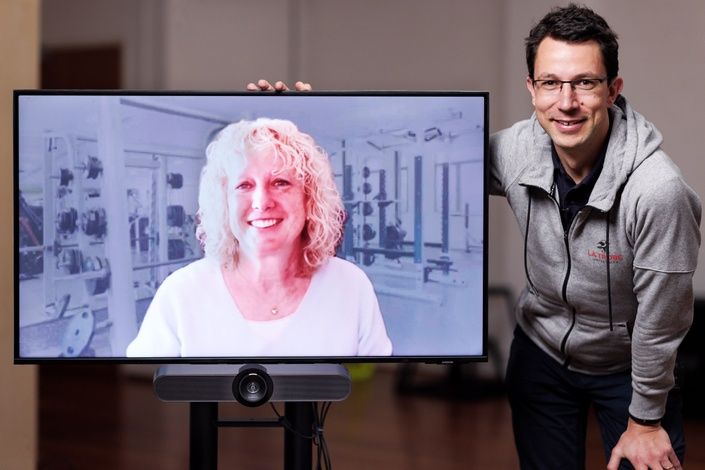Introduction
The Shoulder Osteoarthritis Masterclass, taught by Jo Gibson and Adam Culvenor, provides a complete distillation of shoulder osteoarthritis assessment, management, and much more. This position statement provides clinically relevant, actionable information that may be useful to health professionals.
Part 1: Current Perspectives and Challenges
Research suggests that we cannot be structure-specific in our assessment of the shoulder, whilst the clinical value of imaging is questionable as a high proportion of findings are present in both symptomatic and asymptomatic shoulders. Beyond this, we must consider the individual’s psychosocial status and broader physical health as influences such as poor metabolic health and poor sleep can significantly affect pain and recovery.
- Involvement of the cervical spine, and/or having surgery, are likely to require double the time of rehab to achieve an optimal outcome.
- Patients feel that we massively underestimate the impact of pain on their life; take the time to invest in the individual and understand how their shoulder pain affects their life.
- Early scanning perpetuates a biomedical approach and is more likely to lead to a longer period of rehabilitation. Be mindful of when you send off for a scan and consider if it will change your management.
Part 2: Shoulder Pathologies
Whilst rotator cuff tears are very common (with or without symptoms) differentiating between acute rotator cuff tears and a degenerative tear is crucial as degenerative tears are much better suited to conservative management. In both the arthritic shoulder and rotator cuff pathologies, assessing their metabolic health including obesity, smoking status and lifestyle is paramount as they will contribute to metabolic inflammation and diminish the potential for healing.
- Pain is more heavily correlated with mental health, psychosocial factors, social stressors, comorbidities, and lifestyle factors than it is with structural changes.
- For those who have a a) sudden onset of pain, b) are aged >60, c) have a clear mechanism of injury, and d) immediate loss of function that persists at 2 and 6 weeks, a scan could be useful to assess for a significant rotator cuff tear and surgery is likely to be indicated.
- Don't underestimate involvement of the neck in shoulder pain, especially in the older population. Rule out the cervical spine by clearing their cervical range of motion, tenderness on palpation and symptoms on overpressure.
A massive rotator cuff tear is defined as a) 5cm + tear of an isolated tendon, b) a retracted tendon or c) a tear of 2 or more tendons. It is clinically relevant as a massive rotator cuff tear is more likely to lead to the inability to centre the humeral head and may lead to rotator cuff arthropathy in the future.
Masterclass Preview
Enjoy this free preview of Dr Jo GIbson taking you through the rehab principles of those with shoulder pain.
Part 3: Assessment
Assessment should be simplified wherever possible and should ultimately look to assess if a) it is indeed the shoulder, b) if it is torn, c) if it is stiff, d) if it is irritable, e) if you can change their symptoms, and f) if it is strong enough.
- The subjective assessment should look for a) the mechanism of injury, b) changes in load, c) their age, d) pain and other symptoms such as weakness or instability, and e) loss of shoulder external rotation range.
- Symptom modification is empowering and shows you where to start treatment and should look at manipulating the load and lever arm, compression, resistance, and hand grip.
- An Xray could be useful in an older person with loss of external rotation range who fits an arthritic pattern or with a history of trauma, as it may adjust our expectations for recovery of ROM or may influence how much rehab we do overhead.
- Assess the individual’s lower limb function using a 5x Sit to Stand Test, as poor lower limb function will increase their falls risk and reliance on the upper limb.
Part 4: Rehabilitation
The findings from the symptom modification assessment should be used to inform the starting points for rehabilitation, as it will help patients to buy in and understand the relevance of the exercise. However, treatment should be made meaningful to the person and done long enough to see an improvement.
If rehab isn’t working, injections and surgery may be indicated, especially for AC joint osteoarthritis, but patients and clinicians must understand that they are not a quick fix and are not guaranteed to lead to a good result.
- The first step of rehab is to unload the shoulder, by using a short lever, initiating with the kinetic chain, or supporting the arm on a table or another surface.
- Initiating movements with the kinetic chain (e.g., taking a step forward before flexing the shoulder) can override compensatory strategies and get better local muscle recruitment.
- Those with massive rotator cuff tears seem to have reduced proprioceptive input and representation; address this by using the hand a lot (as it has lots of representation on the brain), using lots of stimuli and cues such as visual targets or bands around their wrists.


